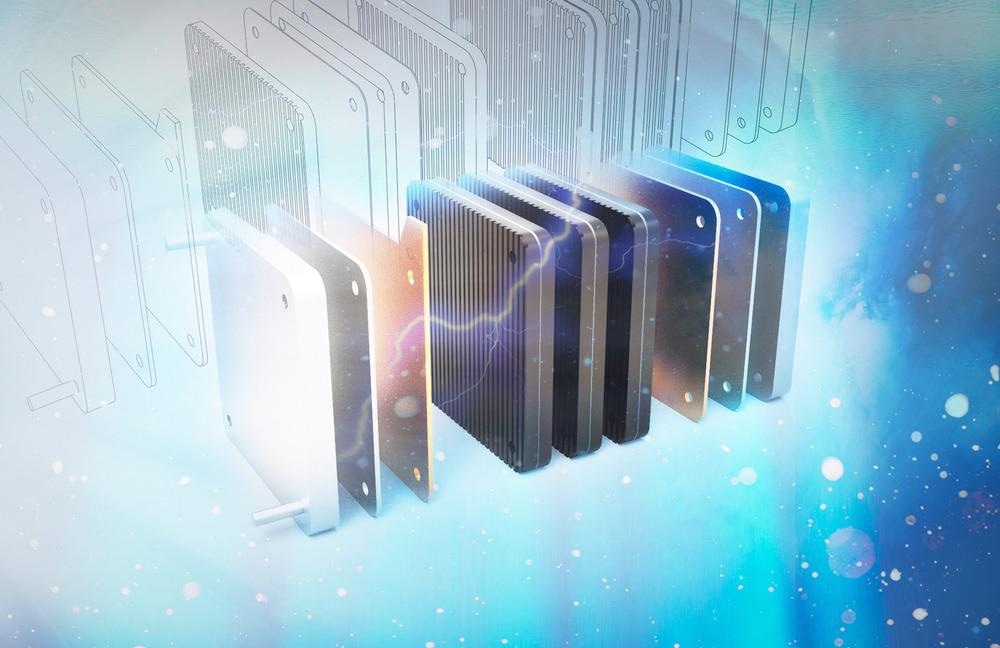A paper currently in pre-proof which will appear in the journal Water Research has presented research into using microbial fuel cells for wastewater treatment and energy production, two important industrial sectors with scope for improvements in terms of sustainability and green credentials.

Study: Pilot scale microbial fuel cells using air cathodes for producing electricity while treating wastewater. Image Credit: Polina Krasnikova/Shutterstock.com
Recovering Energy from Domestic Wastewater Treatment
Biomass contained in wastewater effluence has the potential to be valorized for new products and energy generation purposes. Three hundred billion m3 of domestic wastewater is generated per year, with around 600 billion kWh of energy locked up in organic matter contained in this valuable, renewable resource.
Recovering the energy from wastewater presents an opportunity for achieving the aims of the circular economy as well as helping to drive down the associated costs with wastewater treatment processes.
Microbial Fuel Cells: Current Perspectives and Challenges
Recently, there has been a growing body of research into the industrial applications of microbial fuel cells. These innovative devices generate electricity via the oxidation of organic matter, utilizing exoelectrogenic bacteria for this process. The bacteria are held on the anode and are coupled with the oxygen reduction reaction at the fuel cell’s cathode. This produces electrical power.
Current research into microbial fuel cells has been mainly limited to laboratory and bench-scale reactors. Additionally, research has been primarily focused on using synthetic wastewaters, which do not represent typical real-world wastewaters. There is a growing urgency for pilot-scale demonstration of microbial fuel cells which treat real waste streams. These need to display sufficient performance if the technology is to be implemented on a commercial scale.
A key challenge in microbial fuel cell design for industrial application is scalability. This is due to the need to achieve dense electrode packing whilst increasing the capacity of the reactor to maximize its performance. Volumetric power densities are severely affected if the specific surface area of the electrode is not maintained during scale-up. However, maintaining sufficient electrode packing requires electrodes that can withstand high water pressure to avoid flooding of both the cathode and its chamber.
Previous pilot-scale microbial fuel cells have been limited to wastewater aeration processes. This process is undesirable for wastewater treatment and energy recovery since it consumes half of the energy used in the treatment plant.
Direct air cathodes can reduce energy demands, but thus far, research into this technology in microbial fuel cells has been challenging. Increasing the volume of the reactor and electrode dimensions causes leakage and flooding of the cathode and cathode chamber. To date, the largest direct-air cathode reactor utilized expensive precious metal catalysts, which significantly increased the capital costs of the pilot project.
Recently, a novel cathode utilizing activated carbon in a window-pane architecture with the cathodes contained in a stainless-steel frame. The cathode can withstand increased water height than conventional cathodes and produced a maximum power density similar to smaller laboratory-scale microbial fuel cells.
The Research
In the new paper, the authors have developed and evaluated the largest air-cathode microbial fuel cell thus far presented in research into wastewater treatment and energy generation.
The microbial fuel cell developed in the research contained multi-panel cathodes, each with fifteen activated charcoal cathode panels. The novel cell was tested on domestic wastewater generated at the Tobyhanna Army Depot in Pennsylvania, USA. The total surface area of the cathodes was 20 m2, and the microbial fuel cell had a total volume of 850 liters.
More from AZoM: What is Femtosecond Laser-Based 3D Printing?
The fuel cell was installed in a wastewater treatment facility that already existed at the site. The effluent from the microbial fuel cell functioned as the influent for a biofiltration unit. This was used to treat the wastewater further to meet relevant discharge standards. The combined microbial fuel cell and biofiltration system were integrated into a wastewater treatment skid that could handle and treat up to 3.79 liters of domestic and industrial wastewater per minute.
The final electrode packing density of the novel microbial fuel cell was comparable to the packing density achieved with smaller, laboratory-scale reactors (23 m2 m-3.) Under 6% of the electron packing density was lost, even with the larger reactor size, demonstrating the performance capabilities of the novel fuel cell design.
The wastewater treatment system developed by the authors was assessed over a six-month period, and its performance was evaluated for water quality, energy production, and energy consumption during various operational modes.
The team observed variable power and current generation depending on the position of anode-cathode pairs within the fuel cell and wastewater flow rate. The modules contained in the middle of the reactor generated four times as much current as modules in other positions. The reactor managed to remove 90% of chemicals and 99% of bacteria in the wastewater. Energy consumption was 50% lower than conventional treatment processes.
The pilot-scale microbial fuel cell reactor presented in the paper provides a potential path forward for the technology, demonstrating that it can be integrated into current domestic and industrial wastewater treatment infrastructure whilst efficiently treating wastewater and generating energy.
Further Reading
Rossi, R et al. (2022) Pilot scale microbial fuel cells using air cathodes for producing electricity while treating wastewater [pre-proof] Water Research | sciencedirect.com. Available at: https://www.sciencedirect.com/science/article/abs/pii/S0043135422001713
Disclaimer: The views expressed here are those of the author expressed in their private capacity and do not necessarily represent the views of AZoM.com Limited T/A AZoNetwork the owner and operator of this website. This disclaimer forms part of the Terms and conditions of use of this website.